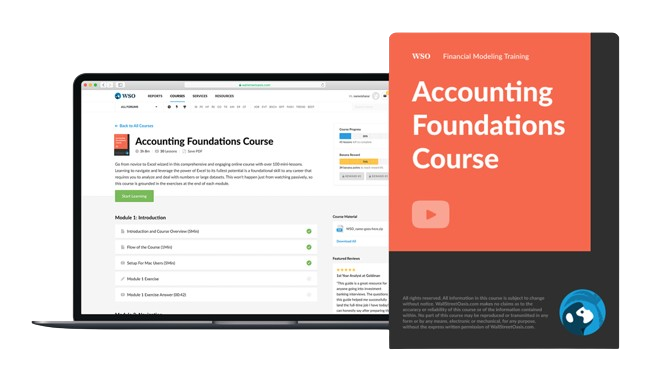Inventory
An item that keeps track of the accounting, element parts, and basic materials.
What is Inventory?
Inventory is an item that keeps track of the accounting, element parts, and basic materials that a business can use in its sales and production.
Company managers must maintain inventory records to ensure that they have enough stock, and they can use these numbers to determine when there is a deficiency.
It refers to the act of listing and measuring items. It can act as a guide in the production phase because it allows companies to determine what they need to produce more of.
It is a significant asset on the balance sheet for many industries, but a lot of it can cause functional liability. It represents any goods that are prepared for purchasing from the customers and directly affects the financial assets and health of the organization.
There are 4 main types of it. They are:
- components and raw materials,
- work in improvement,
- completed maintenance and goods and repair, and
- operating supplies.
Key Takeaways
- For profitable operations to run smoothly, the proper balance between excess and insufficient stock must be maintained. Aim for a balance that reduces storage expenses and the possibility of stockouts while guaranteeing a steady supply.
- By lowering the costs related to stockouts and tying up money in excess inventory, efficient inventory management improves cash flow. Using inventory finance options might help increase cash for expanding businesses.
- Sufficient inventory levels allow companies to quickly fulfill customer requests, which increases customer happiness and loyalty. On the other hand, stockouts may result in lower revenue and harm to the company's image, which may cause clients to choose rival businesses.
- Employing inventory data and putting in place strong management systems enable companies to respond to shifting market conditions and make well-informed decisions.
Understanding Inventory
There are many ways that the company can count its number of goods, and its importance can depend on the precision of tracking and managing, and analyzing.
Knowledge gained from evaluations on supply level is important for success in the business as it assists companies to make business decisions that are more intelligent and cost-efficient.
For a company that is often referred to as the step between manufacturing and order fulfillment, it is central to all of its business operations as it is a primary source of revenue generation.
Even though it can be described and classified in a variety of ways, its management ultimately impacts an organization's ability to fulfill orders.
Businesses collect crucial data by tracking raw materials, safety stock, finished goods, or even packing materials. This data affects purchase and fulfillment operations in the future.
Understanding purchasing trends and the rates at which items sell determines how often companies need to restock, and which items are prioritized for re-purchase. It also improves customer relations, cash flow, and profitability.
Having this information on hand will reduce the amount of money lost through wasted supply, stockouts, and restocking delays.
Inventory Purpose
Achieving proper inventory levels helps prevent stockouts and excess accumulation while increasing profitability, cash flow, and customer satisfaction.
1. Optimise Inventory Levels: To guarantee continuous operations and increased profitability, aim to achieve the ideal balance between excess and insufficient stock.
2. Boost Cash Flow: You may prevent financial restraints and maintain smooth business operations by effectively managing inventories.
3. Customer satisfaction: Fulfilling requests from customers quickly and keeping sufficient stock levels encourages loyalty and keeps business from going to rivals.
4. Inventory Financing Solutions: Examine your alternatives for leveraging your current inventory as collateral to help your firm grow and get over cash flow issues.
5. Cost-Effective Strategies: Although lowering inventory levels could appear economical, it may result in lost chances to close deals. Make thoughtful investments to prevent stockouts and unhappy customers.
Note
Establish robust systems and metrics based on past sales data to streamline inventory management and guarantee timely replenishment.
6. Proactive Reordering: To minimize stockouts and interruptions, identify crucial reorder points and put in place automated alarm systems to restock inventory as soon as possible.
7. Develop Supplier Relationships: Establish solid alliances with dependable vendors who can promptly complete orders, guaranteeing supply continuity in the event of unforeseen demand spikes.
8. Emergency Preparedness: Make an investment in backup plans to quickly replenish supply in case of emergencies, giving top priority to client satisfaction and uninterrupted operations.
9. Sustainable Inventory Practices: To reduce waste and maximize resource utilization while staying in line with budgetary and environmental objectives, implement sustainable inventory practices.
Types of Inventory
Let's look at some of the different types now. Let's continue with the example of a cookie manufacturer to make things clearer:
1. Raw Materials
All the items that are processed to create the final product are referred to as raw materials. Raw materials in a cookie factory include things like milk, sugar, and flour, which are used at various stages of production.
When we talk about raw materials, it's important to remember that a manufacturing company's raw materials can come from a supplier or be a by-product of a process.
The raw materials for our cookie manufacturing company will be sourced from a variety of sources.
Only the sugarcane is brought in from different farmers in a sugar manufacturing company. Bagasse is the leftover substance after it is processed in a factory to extract the juice.
The juice is sent to be boiled, and the bagasse is used as a source of energy. Sugarcane, juice, and bagasse will all be treated as raw materials in this process.
Only the manufacturing industry has the concept of raw materials as its items. There are no raw materials in the trading industry because there is no processing or manufacturing.
2. Work-in-Progress
Work in progress refers to raw materials that have been sent for processing but have not yet been approved as finished goods.
After the raw materials have been processed and the cookies have been molded, they are subjected to a quality check before being sent for final packaging in a cookie manufacturing facility.
All cookies that are awaiting quality assurance are considered works in progress. To put it another way, the work-in-progress category includes all items that have been processed but have not yet been sent for sale.
3. Finished goods
The final items that are ready for sale in the market are referred to as finished goods. All stages of production and quality control have been completed on these items.
The finished goods for the cookie manufacturer are the final packets of cookies that are sent to the market for sale after passing quality checks.
The three main categories that are accounted for in a company's financial accounts are raw materials, semi-finished goods, and finished goods. Other types are kept as a precautionary measure or for some other specific reason.
But how to manage it? Managing supply is one of the most important tasks of any business. It is necessary to manage variations in demand, and it can make operation orders go much more smoothly.
Utilizing all of your resources and maintaining a steady level of supply is key to having success within your business.
Keeping a lot of goods in stock is not risk-free or cost-free because it comes with storage costs and tied-up cash, and it has the risk of going bad before it is sold.
The Three inventory policy formulas
There are three policy formulas that many companies use. The newsvendor model is a mathematical technique to determine optimal supply levels in operations management.
The term comes from a newsboy deciding how many copies of a newspaper to print based on the demand of the day.
Also, under the continuous review policy, you monitor supply levels constantly and order a fixed quantity once your level reaches a certain threshold.
Products are ordered at the same time each period in the periodic review system. The quantity levels at the conclusion of each period are used to calculate the amount of products ordered. Periodic review systems do not have a defined ordering level.
Newsvendor policy
This formula is sometimes called single-period inventory management. According to the name, businesses have only one attempt to buy supplies in order to meet customer orders. It's also used for seasonal items like snow blowers and swimsuits.
- μ: demand estimate
- σ: standard deviation of demand
- Q: quantity of order
- ES: sales expected
- ELS = L(z): lost sales expected, where L(z) is standard loss function for normal distribution from z-chart
- ELI = remaining inventory expected
- Cu= Understocking one item costs you money
- Co= the cost of overstocking a single item
- ES + ELS = µ
- ES + ELI = Q
- Fill rate = ES/µ
According to Newsvendor, the optimal order quantity is Q such that:
![]()
where,
- Cu = P - C + G
- Co = C - V
- P = retail price
- C = Wholesale cost
- V = salvage value
- G = goodwill cost
Continuous review policy
When you use the continuous review policy, you constantly monitor supply levels and order a fixed quantity whenever your level reaches a certain threshold.
Because it is the quantity that minimizes your total costs, the fixed quantity is also known as the economic order quantity (EOQ).
When your level reaches the set reorder point, you place an order for the EOQ (ROP). Use the equations below to calculate the EOQ and ROP.
- D = annual demand for the product
- S = setup cost to place one order
- H = holding cost to keep one item in stock for a year
- SS = safety stock
- z = the z value for the desired service level

ROP = (Average Demand * Average Delivery Lead Time) + Safety Stock
![]()
With periodic review systems, products are ordered at the same time each period. The number of items ordered is determined based on quantity levels at the end of each period. There is no set reorder level for periodic review systems.
It may be impractical to continuously monitor supply levels in some cases, so a company may choose to monitor its levels on a more regular basis. The firm establishes a specific time to check its levels in this policy.
The company orders it at this time to bring its levels up to a target level. It is usually set based on the company's operations, and it is calculated using the equation below.
TI = Average Demand * (Average Lead Time + T) + SS
![]()
Source: Operations Management For Dummies, 2nd Edition
Inventory as an asset
Assets are the resources that a company uses to run its business, manufacture goods, or create value in some other way.
Equipment, fixtures, and furniture that an organization owns or leases, as well as intellectual property such as patents, are examples of assets.
The difference between assets and inventory is that inventory is sold to generate revenue. Assets provide a different type of value to the company by assisting in the purchase and management of it.
Products, parts, and materials make up inventory, and the amount on hand can fluctuate over time. Equipment, fixtures, and furniture are examples of assets, and the amount of assets a company has at any given time is usually consistent.
It is classified as current assets in accounting because it is kept for less than a year. Accounts receivable and expenses, such as insurance policies, are also included in current assets.
Deadstock, or obsolete, are items that do not turn over after a year and are counted as a liability. Inventory assets are items that a company intends to sell, such as finished goods, parts, or raw materials.
It is recorded as a current asset on a company's balance sheet in accounting.
Production lines and retail channels require a consistent supply of stock during peak production or sales times to satisfy customers.
Supply is considered raw materials, finished products, or parts that the company plans to sell. A business documents it as a current asset on the balance sheet as in accounting. In manufacturing, it performs as a buffer if there is a spike in order.
Inventory benefits
Managing supply is important in all aspects of a business. This can help you gain visibility across your entire supply chain. With its management solution in place, your business will enjoy many benefits.
Here are the top 10 perks:
- A rise in sales: Businesses that manage it effectively see a 2-10% increase in sales.
- Greater Transparency of Information: Keep track of when items are delivered, picked, packed, shipped, kitted, manufactured, and so on. Know when you need to order more, when you're out of stock, and when you're overstocked.
- Less Time Between Orders: Lead times are cut in half for businesses that actively manage it.
- Lower Prices: Its management practices that are effective result in fewer write-offs and lower holding costs. Having too much of it on hand can be very costly to your business.
- Increased Delivery Efficiency: Its updates in real-time help to improve the flow of goods to customers.
- Improved Employee Productivity: Time is saved with good management solutions. You and your clients will be more productive if you spend less time managing it.
- Thorough Planning: Make decisions based on trends to stay ahead of the game and always have the right amount of products on hand.
- Stock-outs have decreased: Stock-outs are reduced by 10% to 25% in businesses that actively manage them.
- Improved Customer Satisfaction: Your customers will appreciate you if you improve your accuracy and efficiency. They'll put their trust in you to meet their needs, and when they return for more, you'll have exactly what they're looking for.
- Increase its Turnover: Optimize the value of goods you have and increase its turnover by keeping fewer slow-moving products on hand while increasing your stock levels on profitable goods.
Inventory Formula
There are various ways to calculate the value of ending inventory. From budgeting to its reorder quantity will impact. Also, the most meaningful thing is the growth profit.
This way will affect financial results, so business owners should be careful and use the best method that's good for their business and stay compatible with it.
The formula for calculating the value of the ending supply is as follows:
Ending supply = Beginning supply + Net Purchases – COGS
There are other methods, as shown below.
1. FIFO Method
FIFO is an accounting method that considers supply if you buy as the recent was traded first. By using this way, you are adding your most recent purchases to your COGS before adding your earlier purchases to your ending inventory.
Take the example of the fifth product you purchased at $15 each a few months later and the fifth product you purchased at $20 each.
According to FIFO, if you sell five of these 10 products and have them available in your’s, you will sell the first five for $15 each and record $70 for the cost of goods sold.
The FIFO method is chosen by accountants and business owners during periods of high prices or inflation because it provides a higher value of ending supply than the LIFO method (last in, first out).
2. LIFO Method
LIFO is a method of managing supply that dictates that the most recently purchased items are the first to ship. To put it simply: goods purchased later are sold first.
As an example, let's purchase five of the same items at $15 each, followed by five other items at $20 each.
According to LIFO, if you sell 5 units of merchandise using the most recent purchase method, you will record $100 as the cost of goods sold for the five items you just sold. Accounting professionals may recommend LIFO during declining price conditions.
3. Weighted Average Method
Calculated by dividing the total cost you spent on it by the total number of items on hand, the weighted average method (WAC) is an effective way to measure its costs. By using this method, you can determine what your ending inventory costs have been.
If, for example, you began the fiscal year with 100 items valued at $2.50 each, you would have a beginning balance of 100 items. If, however, you purchased 300 more items later, you would have a beginning balance of 300 items.
In the beginning, it included 400 items valued at $3.25 each. In the end, it contained 1,300 items valued at $1,300 (assuming no purchase was made during this period).
In cases where all products sold are identical, WAC is the simplest method to value ending inventories.
Conclusion
Effective inventory management is essential to any company's success. Businesses may guarantee seamless operations, increase profitability, and boost customer happiness by keeping proper inventory levels.
Businesses have a variety of instruments at their disposal to optimize efficiency, whether it's optimizing inventory finance options for expansion, balancing supply and demand, or putting in place efficient inventory management systems.
Additionally, knowing the many kinds of inventory—raw materials, work-in-progress, and finished goods—enables companies to adjust to shifting market conditions and make well-informed decisions.
In today's competitive market context, firms can minimize costs, eliminate stockouts, and ultimately achieve long-term success by prioritizing inventory management and using best practices.
Free Resources
To continue learning and advancing your career, check out these additional helpful WSO resources:










or Want to Sign up with your social account?